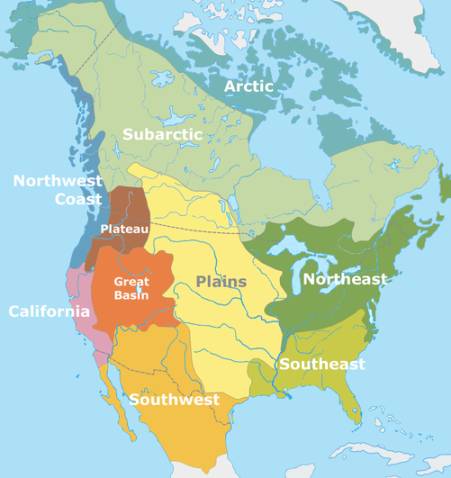They were settled on land that was purchased from Indigenous Plains tribes such as the Pawnees and Kaws and frequently conflicts ensued between the emigrants and the local Native Americans. Crow Creek Sioux Tribal Council.
History and Tribes of the Plains Indians.

Indian tribes of the great plains. These flat grassy plains were rich in wildlife such as deer wolves and herds of buffalo. Oglala Sioux Tribal Council. Like the Europeans who came to America from different countries these tribes all had their own language religious beliefs customs and ways of life.
These tribes included Blackfoot Crow and Dakota. Perhaps because they were among the last indigenous peoples to be conquered in North America the tribes of the Great Plains are often regarded in popular culture as the archetypical American Indian. The Plains Indians hunted buffalos for its hides which they used to make clothing and teepees.
Three Affiliated Tribes Business Council. Indian Tribes of the Great Plains Region Leave a Comment America Native American The Great Plains Regional Director is responsible for the direction and oversight of Bureau responsibilities and activities as they pertain to the mission and goals of the Department of Interior and the Bureau of Indian. Cheyenne River Sioux Tribe.
They were assembled by leaning long poles. Making them excellent housing for the nomadic tribes of the plains. Tribes of the Great Plains Culture Group Arapaho Tribe Arikara Tribe Assiniboine Tribe Blackfoot Tribe Comanche Tribe Cheyenne Tribe Crow Tribe Gros Ventre Tribe Hidatsa Tribe Ioway Tribe Kaw Tribe Kiowa Tribe Kitsai Tribe Missouria Tribe Mandan Tribe Omaha Tribe.
Before the arrival of European settlers many of the Plains Indians lived along. MAP OF THE PLAINS INDIANS BLACKFEET Omaha Ponca CHEYENNE FLATHEAD CROW Assiniboine GROS VENTRE ARAPAHO WICHITA COMANCHE QUAPAW KIOWA OSAGE OTO KANSA PAWNEE MISSOURI TETON SIOUX IOWA YANKTONAI SANTEE SIOUX YANKTON LIPAN APACHE Tonkawa CADDO Natchez Houma ATAKAPA Chitimacha TEKESTA CALUSA TIMUCUA CATAWBA. Tepees were easy to assemble disassemble and transport.
The words indigenous or Native in reference to societies is a term used to describe the first people to inhabit a land. The Indian tribes who lived on the Great Plains included the Apache the Comanche the Sioux the Cheyenne and the Arapahoe. From Wikipedia the free encyclopedia Plains Indians Native American tribes the indigenous peoples of North America from the Great Plains region in central Canada and the United States.
Great Plains Culture Area. These Native American tribes lived in the Great Plains regions of North America. The Plains Indians before the 1860s were indigenous Americans living in the Great Plains.
Most tribes incorporated horses into their economy and culture while many used the horse to totally transform their lifestyle. The Native American tribes who lived here became known as the Plains tribes. The most important change horses brought to these tribes was the ability to abandon permanent villages and travel over the Great Plains.
The Plains Indians who did travel constantly to find food hunted large animals such as bison buffalo deer and elk. Plains Wars - Plains Wars - Defeat of the Plains Indians. The flash point came along the Bozeman Trail.
The Plains Indians included many tribes including the Sioux the Cheyenne the Crow the Blackfoot the Comanche and the Pawnee among many more. There were more than 30 different tribes who lived in the Great Plains. By 1841 emigrant Native Americans occupied squared-off tracts along the eastern portions of the Great Plains from present-day Nebraska to Texas.
This is an index to the Native American language and cultural information on our website pertaining to Plains Indian tribes. In the mid-1700s Plains tribes started riding horses that had been brought over from Europe. Rosebud Sioux Tribal Council.
The Spanish brought horses with them in the 1500s to their settlements in the Southwest and they eventually spread to Indian tribes in the Great Plains. The treaties of 1865 did not hold as the Indians who signed the documents had no authority over all of the individualistic Plains peoples and the government had no practical or politically palatable means of controlling a tide of white pioneers eager to exploit western opportunities. The Indians of the Great Plains were known for living in tepees while on their hunting trips.
Groups such as the Blackfeet Sioux pronounced SOO and Comanche. Lower Brule Sioux Tribal Council. Spirit Lake Tribal Council.
Most tribes lived on the fringes of the Plains and along the banks of the Missouri River. Plains Indian member of any of the Native American peoples inhabiting the Great Plains of the United States and Canada.
